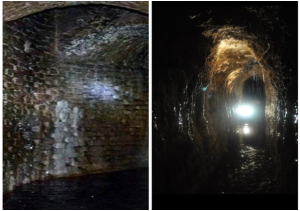
TTT NEWS NETWORK
BHOPAL | 15 AUGUST 2025
Madhya Pradesh celebrates a significant milestone as three extraordinary sites – the ingenious KhooniBhandara water system of Burhanpur, the magnificent Gond Monuments of Ramnagar, and the ancient Rock Art Sites of the Chambal Valley -have been included in UNESCO’s Tentative List of World Heritage Sites in the year 2024, recognizing their outstanding cultural and historical significance to humanity’s shared heritage.
Khooni Bhandara:
Burhanpur’s Ingenious Underground Water System located in the historic city of Burhanpur, the KhooniBhandara stands as a remarkable testament to medieval hydraulic engineering. Built in 1615 CE under Abdur Rahim Khan-i-Khanan during Emperor Jahangir’s reign, this underground water system addressed the city’s chronic water scarcity, serving both Mughal armies and local inhabitants. In 2024, it was recognised by UNESCO’s Tentative List of World Heritage Sites, cementing its status as one of India’s most impressive historic water management structures.
An Engineering Wonder: – Constructed on the Persian qanat system, this Mughal-era wonder consists of eight waterworks, featuring 103 kundis (well-like structures) linked by a 3.9-kilometre marble tunnel beneath the city. Of the original networks, six remain intact today. The name “Khooni” (meaning bloody) stems from the reddish tint in its mineral-rich waters. Designed to serve 35,000 residents and 200,000 Mughal soldiers, it exemplifies meticulous planning and execution.
Technical Brilliance: – What makes KhooniBhandara truly remarkable is its reliance on gravity alone. With no pumps or mechanical devices, the system intercepts groundwater from the Satpura hills and channels it via underground conduits to Jail Karanj, a central storage chamber. Persian geologist Tabkutul Arz adapted the qanat technique to Burhanpur’s terrain, integrating storage points such as Mool-Bhandara, Chintaharan-Bhandara, Sookha-Bhandara, and Khooni-Bhandara, with water distributed citywide through underground pipelines.
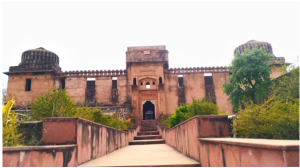
UNESCO Recognition – Now acknowledged for its Outstanding Universal Value, KhooniBhandara represents:
* A remarkable fusion of Persian and Indian water management techniques.
* A medieval water conservation marvel in a semi-arid region.
* An extraordinary feat of engineering, demonstrating human ingenuity in adapting to environmental challenges.
Despite a partial collapse in 1977, parts of the system still function today, supplying water to Burhanpur. Blending Mughal vision with Persian expertise, this forgotten wonder, stands as a testament to India’s rich legacy of water management. It now awaits greater recognition as an architectural and historical treasure.
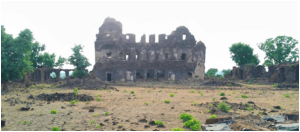
The Gond Monuments of Ramnagar, Mandla:
The remarkable Gond monuments of Ramnagar, Mandla have earned their place on UNESCO’s Tentative List of World Heritage Sites in 2024, recognizing their unique cultural and historical significance in central India. A Kingdom’s Strategic Capital These monuments represent the seat of power of the Garha-Mandla kingdom, built by King Hirde Shah in the late 17th century. He strategically located deeper into the forest, establishing Ramnagar along the Narmada River to enhance security through difficult access.
Architectural Fusion what makes these monuments truly special is their fascinating cultural amalgamation. The Gonds, originally forest-dwelling tribes, incorporated architectural elements from their adversaries – the Mughals and Rajputs – creating a distinctive blend of styles:
- Mughal influences: Symmetrical structures, central courtyards with water features, recessed archways, pointed archways, fluted domes, and stone latticed screens
- Rajput features: Projecting eaves, decorative stone parapets, domed cupolas, and multi-foil arches
The Magnificent Cluster The architectural cluster comprises five key structures, each embodying a unique amalgamation of Gond, Rajput and Mughal influences:
Moti Mahal (Rajmahal): The three-storey royal palace rises 80 feet above the Narmada, offering commanding views of both riverbanks. It features a central courtyard with water features, elaborate drainage systems, and a network of tunnels.
Raibhagat ki Kothi: Built for Hirde Shah’s royal minister (Dewan) , this symmetrical structure boasts four corner domes and an ornate painted ceiling.
Vishnu Mandir (Suraj Mandir): Constructed by Queen Sundari, this temple presents a fascinating architectural hybrid resembling both a Mughal tomb and a Bengali Pancha Ratna temple.
Begum Mahal: A three-storey structure with distinctly Mughal features, reportedly built for a Mughal princess.
Dalbadal Mahal: Built for the military generals and soldiers, though now sadly in ruins.
UNESCO Recognition These monuments, added on UNESCO’s Tentative List in 2024, showcase a unique blend of Mughal, Rajput, and Gond architecture, reflecting the Garha dynasty’s last great reign. An outstanding example of defensive architecture harmonized with nature, the site also preserves a vital stone inscription detailing the Gond rulers’ lineage. These monuments stand out not just for their architecture but for their rich cultural fusion. Once forest dwellers with little interest in empire-building, the Gonds gradually adopted Rajput and Mughal influences – symmetry, courtyards, domes, archways, and latticed screens – while retaining their pragmatic, agrarian roots. The Ramnagar monuments mark the last great era of an indigenous tribal kingdom, symbolising the Gonds’ adaptability and resilience. Now protected, they offer a rare glimpse into how India’s indigenous communities balanced cultural exchange with teir unique identity.
Rock Art Sites of the Chambal Valley:
The remarkable Rock Art Sites of the Chambal Valley have secured their place on UNESCO’s Tentative List of World Heritage Sites, recognizing one of the world’s largest concentrations of prehistoric and historic artworks that span millennia of human creativity. A Vast Archaeological Canvas Located within the undulating Vindhyan, Satpura and Kaimur ranges of central India, the Chambal Basin stretches across Madhya Pradesh, Rajasthan and Uttar Pradesh, covering an impressive 143,219 square kilometres. This rectangular basin – once known as Charmavati – with its diverse geology of sandstone outcrops, lateritic hills and basaltic formations, provided the perfect canvas for ancient artists.
An Extraordinary Timeline What makes the Chambal Valley rock art truly exceptional is its unbroken artistic timeline spanning from the earliest human occupation to historical periods:
Palaeolithic Period: The region’s oldest artistic expressions include simple cupules (small cup-shaped depressions) carved into rock surfaces at sites like Darki, Chattaneshwar and Kanyadeh. Remarkably, engraved ostrich eggshells discovered at Chandrasel date back approximately 40,000 years.
Mesolithic Period: This era brought a flourishing of artistic expression, with vibrant depictions of hunting, gathering and daily life. Artists created sophisticated paintings featuring animals adorned with abstract patterns, X-ray-like imagery revealing internal organs, and elegant scenes of dancing and child-rearing.
Chalcolithic Period: As societies evolved, the artwork reflects a profound cultural shift towards pastoralism and cattle herding. This period saw the emergence of settled communities of the Ahar, Kayatha and Malwa cultures (3600-1500 BCE).
Megalithic Period: This phase is evidenced by cup-marked dolmens at Silor and the unique channeled cup marks at Kotra Vihar – features that are rare in Indian megalithic contexts.
Early Historical Period: The artistic tradition continues with religious symbolism including fire altars, kalashas, swastikas and triratna patterns. Later phases incorporate representations of Hindu deities like Ganesha and Rama.
UNESCO Recognition – The Chambal Valley rock art sites are now on UNESCO’s Tentative List for their Outstanding Universal Value. Spanning from the Acheulian to Early Historical periods, they showcase humanity’s evolving artistic expression, cultural transitions, and deep connection with nature. These ancient galleries serve as priceless records of civilization, and their recognition marks a crucial step in safeguarding them for future generations.

Advertisement:


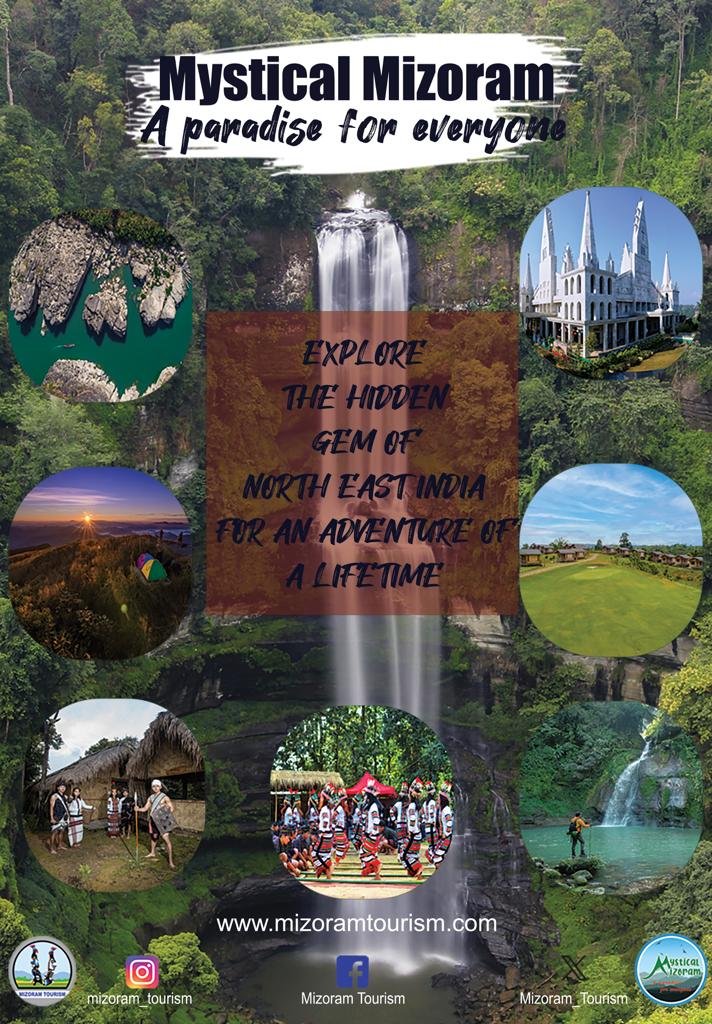

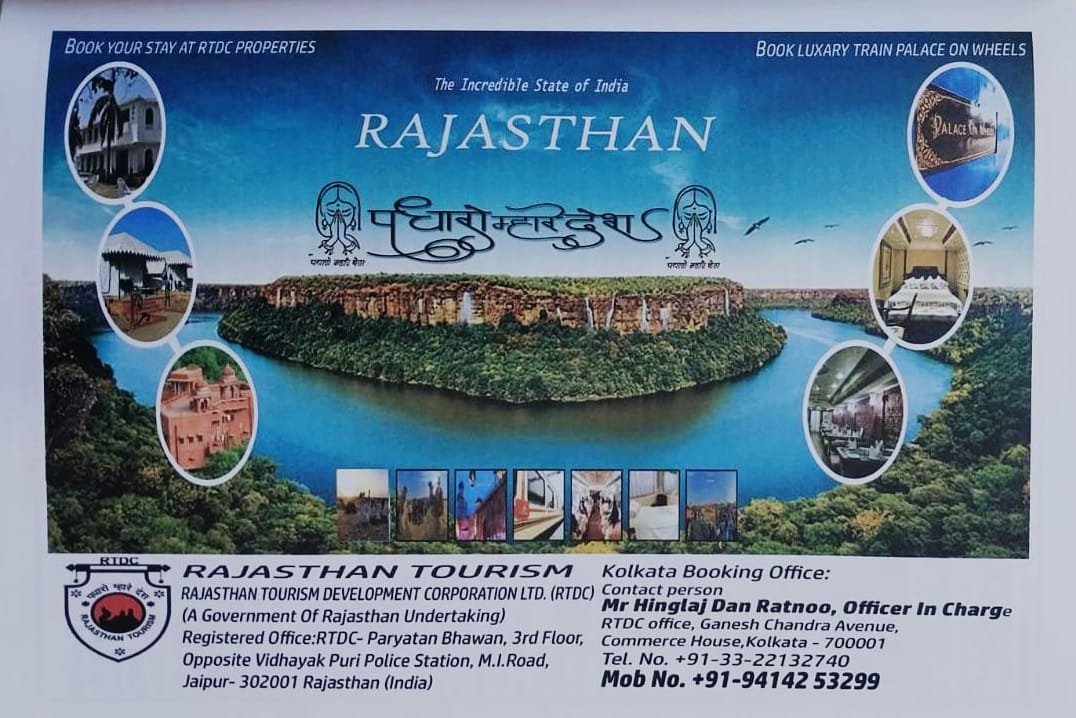







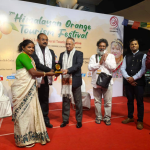







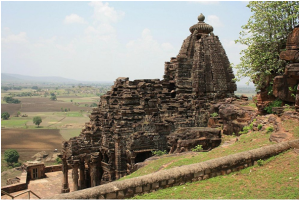
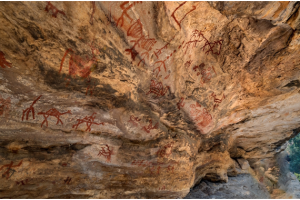
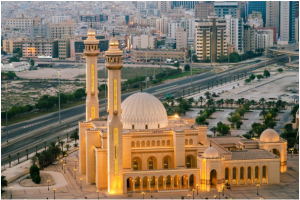







Add Comment